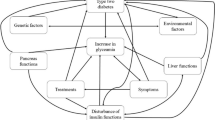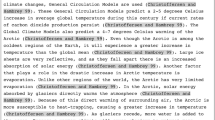Abstract
A THEORETICAL DESCRIPTION OF HYPERTEXT is provided and three applications of hypertext: Electronic Studying, Literary Exploration, and Qualitative Research are discussed. Hypertext is defined as a form of writing with three characteristics: discernable free standing content nodes, links between nodes, and the expectation of active choice by readers. Some applications discussed are communication tasks, interrelating data of differing types, formats, and medium of representation; tasks where either the form of the data and/or the particular uses of the data are not known in advance, or for which there are multiple, simultaneous uses; tasks reproducing physical and/or metaphorical structures, and tasks juxtaposing information in new contexts. In electronic studying, students using hypertext are able to link information recorded on electronic note cards into study webs appropriate for report writing and for interrelating concepts among several disciplines. Literary explorations using hypertext are possible where readers construct their own stories and interpretation of literary elements provided by others. Hypertext can be applied to qualitative research during the process of analyzing field notes and interview protocols. The use of hypertext in these three areas will create a pool of experienced hypertext authors and readers who will be capable of measuring the effectiveness of hypertext.
Similar content being viewed by others
References
Burke, J. (1978).Connections. Boston: Little, Brown and Company.
Bush, V. (1945). As we may think.The Atlantic Monthly, 176(1), 101–108.
deBono, E. (1970).Lateral thinking. New York: Harper Colophon Books.
Dede, C. (1988). The role of hypertext in transforming information into knowledge. In W.C. Ryan (Ed.),Proceedings of the National Educational Computing Conference ’88 (pp. 95–102). Eugene, Oregon: International Council on Computers for Education.
Goodenough, A.Inigo gets out. Computer Program.
Harcourt Brace Jovanovich (1980).Biological science: An inquiry into life. New York: Harcourt, Brace & Jovanovich.
Herrstrom, D.S., & D.G. Massey (1989). Hypertext in context. In E. Barrett (Ed.),The Society of Text (pp. 45–58). Cambridge, Massachusetts: The MIT Press.
Horney, M. (1989).It’s my business. Unpublished manuscript.
Johnson, T.H. (1955).The poems of Emily Dickinson, Volume 2. Cambridge, Massachusetts: The Belknap Press of Harvard University Press.
Jonassen, D.H. (1988). Designing structured hypertext and structuring access to hypertext.Educational Technology, 28(11), 13–16.
Kaskel, A., Hummer, P.J., Jr. & Daniel, L. (1981).Biology: An everyday experience. Columbus, Ohio: Charles E. Merrill Publishing Co.
Masters, E.L. (1914).Spoon river anthology. New York: Macmillan Publishing Company.
Meyrowitz, N. (1988). Issues in designing a hypermedia document system. In S. Ambron and K. Hooper (Eds.),Interactive Multimedia. Redmond, Washington: Microsoft Press.
Nelson, T.H. (1974).Dream machines. Redmond, Washington: Microsoft Press.
Nelson, T.H. (1987).Literary machines. South Bend, IN: The Distributors.
Otto, A., Towle, A. & Bradley, J.V. (1981)Modern biology. New York: Holt, Rinehart and Winston.
Slesnick, I.L., Balzer, L., McCormack, A.J., Newton, D.E. & Rasmussen, F.A. (1983).Biology. Glenview, Illinois: Scott, Foresman and Company.
Smallwood, W.L. & Alexander, P. (1981).Biology. Glenview, Illinois: Silver Burdett Company.
Stein, J. (Ed.) (1980).The Random House College Dictionary. New York: Random House, Inc.
Tsai, C. (1988). Hypertext: technology, applications and research issues.Journal of Educational Technology Systems, 17(1), 3–14.
Van Dam, A. (1987). Hypertext ’87 keynote address. InACM Hypertext on Hypertext [computer program]. Association for Computing Machinery, 11 W. 42nd St., New York, NY 10036.
Wittgenstein, L. (1921).Tractatus logioco-philosophicus. D.F. Pears & B.F. McGuiness (Trans. 1961) London: Routledge and Kegan Paul.
Author information
Authors and Affiliations
Rights and permissions
About this article
Cite this article
Horney, M.A. Uses of hypertext. J. Comput. High. Educ. 2, 44–65 (1991). https://doi.org/10.1007/BF02941588
Issue Date:
DOI: https://doi.org/10.1007/BF02941588




